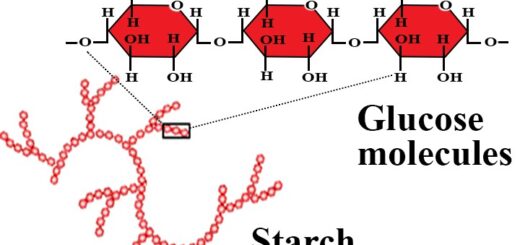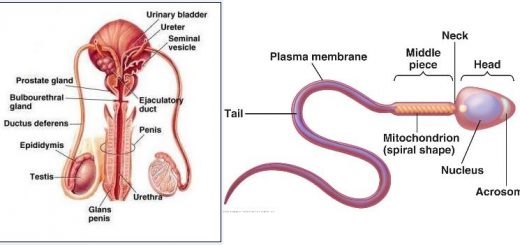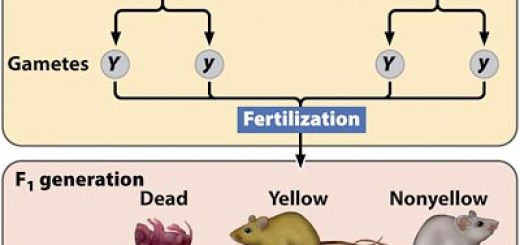Pollination, Fertilization, Seed and Fruit formation in flowering plants
Pollination process provides the flower with the male gametes which are necessary for fertilization process of the ovule that forms the seeds, It stimulates the activity of auxins which are necessary for the development and growth of the ovary into a mature fruit (even if the fertilization does not take place).
Pollination in flowering plants
Pollination in flowering plants is the process of transferring the pollen grains from the anther to the stigma of the flower, Types of pollination are self-pollination and cross-pollination.
Self-pollination is the transfer of pollen grains from the anther of a flower to the stigma of the same flower or to the stigma of another flower on the same plant, The flowers are hermaphrodite, where: organs of the two sexes must be matured at the same time, The anther level must be higher than the stigma level.
Means of pollen grain transportation in cross-pollination are air, insect, water & man, Cross-pollination is the transfer of pollen grains from the anther of a flower on a plant to the stigma of a flower on another plant of the same species, The flowers are hermaphrodite, where: Organs of one sex must be matured before the other sex, the level of anther must be lower than the level of stigma, The flowers are unisexual.
Fertilization in flowering plants
This process takes place according to the two following steps:
First step (Pollen grain germination):
When the pollen grain falls on the stigma, it begins to germinate, where: The tube nucleus forms the pollen tube which penetrates the stigma and the style, till it reaches the micropyle of the ovary, The tube nucleus degenerates, while the generative nucleus divides mitotically to form two male nuclei.
Second step (Double fertilization):
It includes two stages which are fertilization of the ovule and triple fusion.
Fertilization of the ovule occurs as follows:
- One male nucleus (n) transmits from the pollen grains to the ovule through the pollination tube.
- This nucleus (n) fuses with the egg nucleus (n), forming the zygote (2n).
- The zygote starts to divide by mitosis division, forming the embryo (2n).
Male nucleus (n) + Egg nucleus (n) → Zygote (2n) → Embryo (2n)
Triple fusion occurs as follows:
- The second male nucleus (n) transmits from the pollen grain to the ovule.
- The second male nucleus (n) fuses with the two nuclei of the embryonic sac (2n) [two polar nuclei, where each one of them is (n)], forming the endosperm nucleus that is triploid (3n).
- The endosperm nucleus divides, forming the endosperm tissue that supplies the embryo during its early developing stages with food and this tissue may remain outside the embryo so that it occupies a part of the seed.
Male nucleus (n) + Two nuclei of the embryonic sac (2n) → Endosperm nucleus (3n)
Triple fusion is the process of fusion of one of the two male nuclei of pollen grain with the two embryonic sac nuclei to form the endosperm nucleus.
Double fertilization is the fusion of one of the two male nuclei (n) of the pollen grain with the egg nucleus (n) to form the zygote (2n) which divides, forming the embryo (2n) and the fusion of the other male nucleus (n) with the two embryonic sac nuclei (2n), forming the endosperm nucleus (3n) which divides to form the endosperm tissue.
Seed and fruit formation
After fertilization, the calyx, corolla, androecium, style, and stigma wilt and fall out, only the ovary remains.
Fruit formation
The ovary stores food, increases in size, and ripens, transforming into a fruit, due to the hormones (auxins) that are secreted by the ovary, the ovary’s wall transforms into the pericarp.
False fruit is a fruit in which any part, except its ovary, enlarges with food such as in apple fruit in which the receptacle is enlarged (which is eaten).
Seed formation
The two synergid cells and antipodal cells decay, while the micropyle remains to allow the entry of water into the seed during the germination, The ovule’s wall becomes the seed coat.
We can differentiate between the seeds according to its retention of endosperm into endospermic seeds and exendospermic seeds as follows:
Endospermic seeds (Grains)
The embryo keeps the endosperm, so that it remains present, The integuments of the ovary and ovule fuse together, forming a single-seeded fruit which called the grain, Seeds with one cotyledon, Examples: maize and wheat.
Exendospermic seeds (Seeds)
The embryo feeds on the endosperm during its development, so, the plant has to store another food for the embryo in two cotyledons, The integuments of the ovule harden, forming the seed coat or testa which is called the seed, Seeds with two cotyledons, Examples: beans and pea.
The fruits and seeds maturation often leads to the discontinuity of plant growth and sometimes to its death, especially in the annual plants, due to the consumption of the stored nutrient substances and inhibition of hormones, If pollination and fertilization do not take place, the flower wilts and drops off without fruit formation.
There are some fruits which keep some parts of the flower, for example:
- Pomegranate: the leaflets of the calyx and stamens remain.
- Eggplant and dates fruits: the calyx leaves may remain.
- Marrow fruits: the corolla leaflets may remain.
The annual plants are plants that complete their life cycle from germination to seed production within one year, then degenerate after leaving their seeds in the soil, Examples: maize and barley.
Parthenocarpy
Parthenocarpy is the natural development of fruits that are devoid of seeds because they are formed without fertilization (which is not considered as reproduction, Types of parthenocarpy are natural and artificial, It occurs naturally in banana and pineapple, It occurs artificially by spraying the stigma with the extraction of pollen grains or using indole or naphthol acetic acid to stimulate the ovary to form the fruit.
Parthenogenesis
Parthenogenesis occurs in animals, The ability of the ovum to develop into a new individual without fertilization by a male gamete, It is considered a special type of asexual reproduction, It occurs naturally in aphid insects and honey bees, It occurs artificially by activating the eggs through their exposure to thermal or electric shock or radiation or some salts or agitation or pricking with needles as in the frog and sea star or by using similar stimulants to form early embryos from their ova as in the rabbits.
Asexual & sexual reproduction in plants, Pollination & Stages of fertilization process in plants
Reproduction in flowering plants, Structure & functions of the flower



